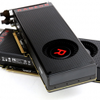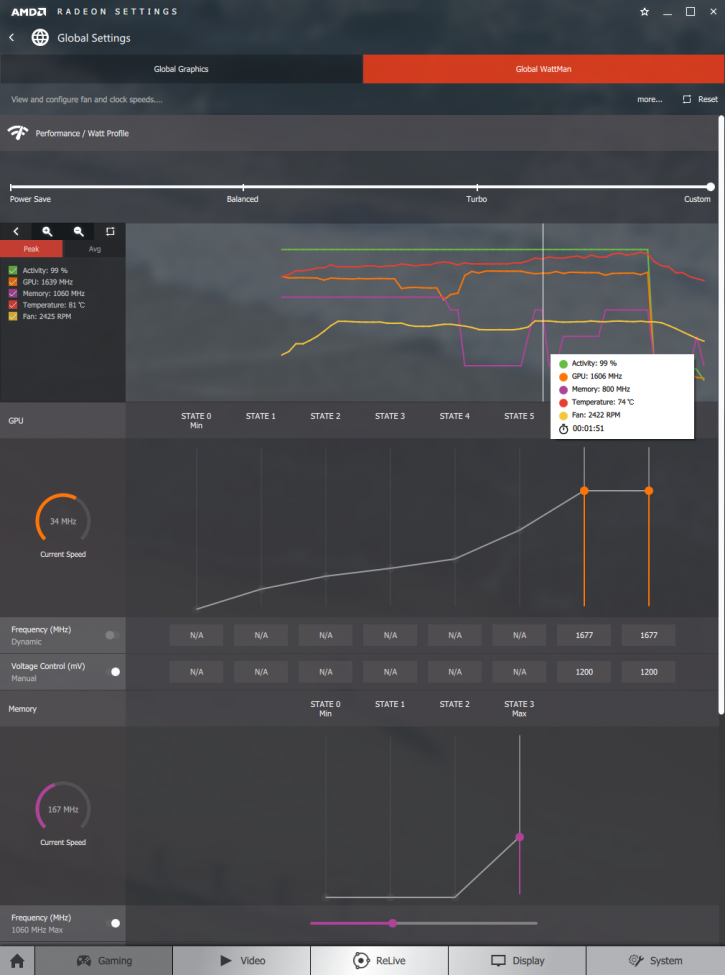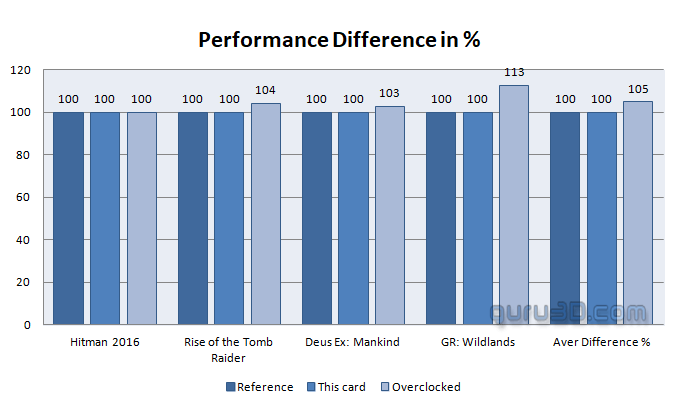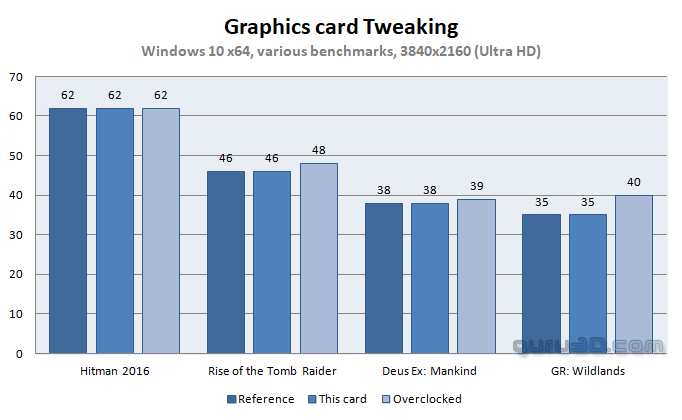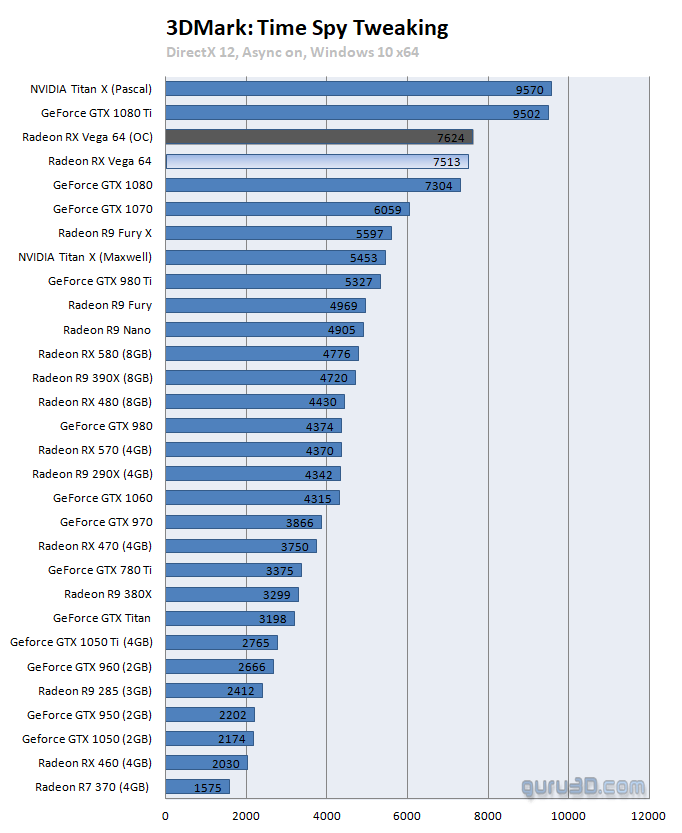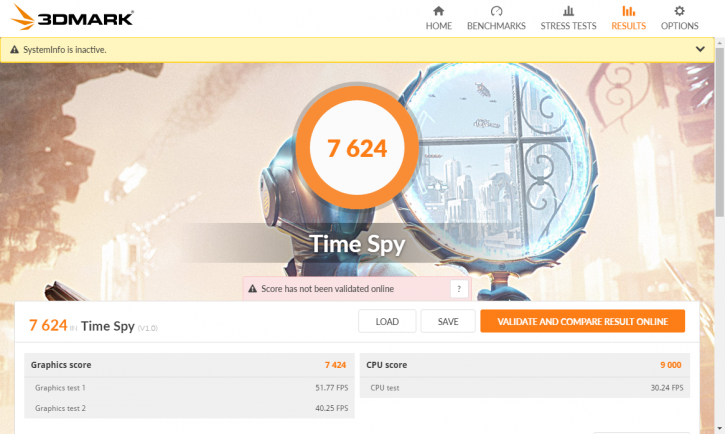Overclocking The Graphics Card
Overclocking The Graphics Card
Traditional overclocking - As most of you know, with most video cards you can apply a simple series of tricks to boost the overall performance a little. Typically you can tweak on core clock frequencies and voltages. By increasing the frequency of the videocard's memory and GPU, we can make the videocard increase its calculation clock cycles per second.
You can use any tweaking utility of your preference of course. You can use the internal driver Wattman. Our applied tweak:
- Core: 1700 MHz
- Mem: 1060 MHz data-rate
- Power: +50%
- Voltage GPU: 1150 mV
- Volatge mem: 1200 mV
- Fan: Default
In the above chart you can see the relative performance difference in between a reference card and then after we added the applied tweak, our overclocked results are plotted in percentages.
As you can see, due to the downclocking the results remain icky. In the end that high-clock tweak brought us just 5% extra performance. I'll await some new driver updates before I make any solid conclusions here, but this is not looking good. It seems that Vega downclocks big-time once it hits certain limiters. And on long run gaming that is bad news (when tweaked).
We halted testing overclocking until AMD can deliver a final driver where it works properly.
There are sliders in the Wattman control panel that allow users to change the clock speeds for the GPU's highest power states. You'll see them there if you pick the “custom” profile.
Unfortunately, there was an issue in the press driver where adjustments made to these sliders are not applied. An updated beta driver however ONLY allowed us to use this driver for playing with Wattman. The standard performance and other tests should still be performed with the previously uploaded driver. Not even AMDhad time to test this functionality with all other aspects of the driver and needs further testing before prime time.
To be updated.
